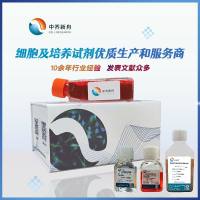The Do and Don’t of Cell Culture
互联网
Given below are a few of the essential "do’s and don'ts" of cell culture. Some of these are mandatory e.g. use of personal protective equipment (PPE). Many of them are common sense and apply to all laboratory areas. However some of them are specific to tissue culture.
The Do’s
- Use personal protective equipment, (laboratory coat/gown, gloves and eye protection) at all times. In addition, thermally insulated gloves, full-face visor and splash-proof apron should be worn when handling liquid nitrogen.
- Always use disposable caps to cover hair.
- Wear dedicated PPE for tissue culture facility and keep separate from PPE worn in the general laboratory environment. The use of different colored gowns or laboratory coats makes this easier to enforce.
- Keep all work surfaces free of clutter.
- Correctly label reagents including flasks, medium and ampules with contents and date of preparation.
- Only handle one cell line at a time. This common-sense point will reduce the possibility of cross contamination by mislabeling etc. It will also reduce the spread of bacteria and mycoplasma by the generation of aerosols across numerous opened media bottles and flasks in the cabinet.
- Clean the work surfaces with a suitable disinfectant (e.g. 70% ethanol) between operations and allow a minimum of 15 minutes between handling different cell lines.
- Wherever possible maintain separate bottles of media for each cell line in cultivation.
- Examine cultures and media daily for evidence of gross bacterial or fungal contamination. This includes medium that has been purchased commercially.
- Quality Control all media and reagents prior to use.
- Keep cardboard packaging to a minimum in all cell culture areas.
- Ensure that incubators, cabinet, centrifuges and microscopes are cleaned and serviced at regular intervals.
- Test cells for mycoplasma on a regular basis.
The Don’ts
- Do not continuously use antibiotics in culture medium as this will inevitably lead to the appearance of antibiotic resistant strains and may render a cell line useless for commercial purposes.
- Don’t allow waste to accumulate particularly within the microbiological safety cabinet or in the incubators.
- Don't have too many people in the lab at any one time.
- Don't handle cells from unauthenticated sources in the main cell culture suite. They should be handled in quarantine until quality control checks are complete.
- Avoid keeping cell lines continually in culture without returning to frozen stock.
- Avoid cell culture becoming fully confluent. Always sub-culture at 70-80% confluency or as advised on ECACC's cell culture data sheet.
- Do not allow media to go out of date. Shelf life is only 6 weeks at +4ºC once glutamine and serum is added.
- Avoid water baths from becoming dirty by using Sigma Clean (Prod. No. S5525 ).
- Don’t allow essential equipment to become out of calibration. Ensure microbiological safety cabinets are tested regularly.









